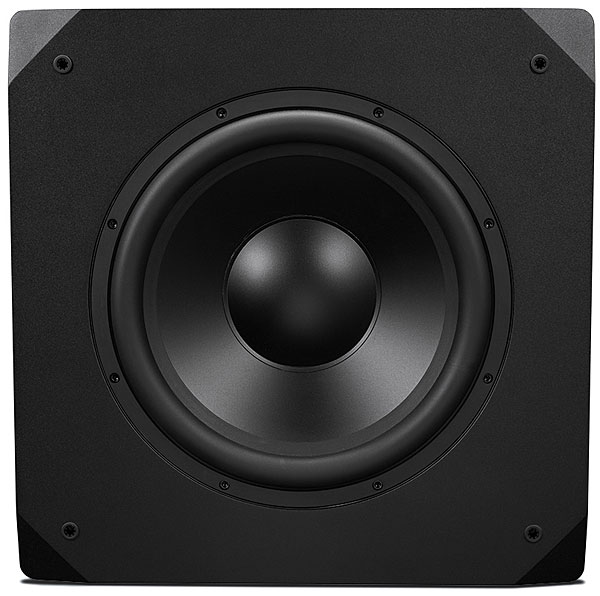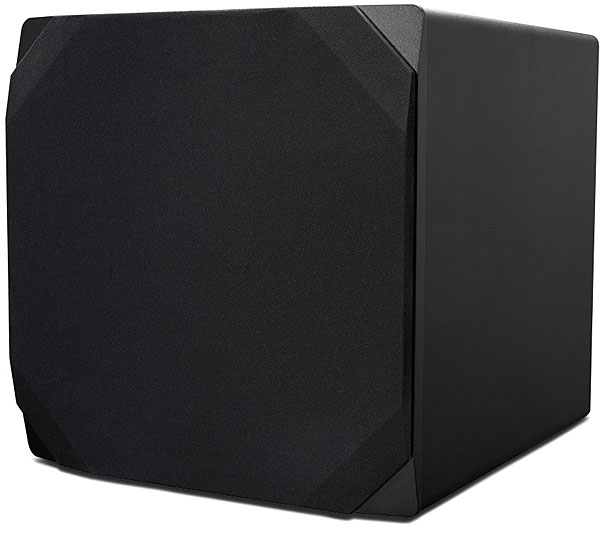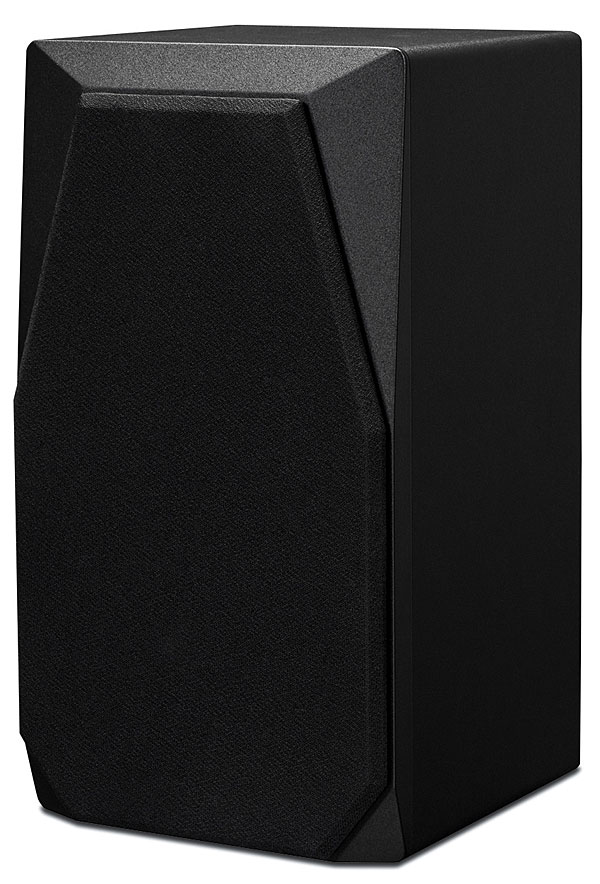Emotiva BasX System Review Page 3
The budget-level limits of the BasX speakers were most apparent in Richter’s performances of the piano concertos. The Rachmaninoff lost its sharp edges but still came off thin and unsatisfying (as it usually does with all but the very best gear). The Tchaikovsky was better, but not much. It wasn’t just that the cutting edge of the strings was blunted with these speakers’ softer delivery; the other orchestral sections were blurred and submerged as well. The piano cut through, as intended, but it was like a jewel in a lesser setting.
The Wailers fared better. The more relaxed feel of the Denon/Emotiva pairing suited the music better overall, especially in the two Peter Tosh songs, with their rougher lead vocals. You probably know what’s coming next: Yep, the S12 sub loved those bass lines. The leading edges of bass tones could have been better defined, but the body of each note was as full and rounded as on my $1,650 reference subwoofer.
In Desmond Blue, the BasX speakers’ less analytical voicing delivered a sax that was imaged less densely, and with softer outlines than what I typically hear, but it was also imaged larger and could be played louder without becoming grating. Another upside was a canned string section that sounded less irritating, which let me hear a bit deeper into the music. I began to recognize similarities to the string sections that George Martin shaped for the Beatles. After a while, the BasX speakers’ politeness came to remind me of the top end of my much-revered Sennheiser HD 600 headphones. What they share in common is musical flow. If you value net effect over detail excavation, these are pretty good speakers.

All Emotiva Listening
Finally came phase three, the all-Emotiva BasX system of electronics and speakers, which proved an excellent match-up. Why would I prefer the pre/pro and amp to the Denon receiver, which is measurably more powerful and costs more than twice as much? More than anything, it’s the voicing: Emotiva has clearly designed their electronics and speakers to mesh happily. The BasX separates’ somewhat more analytic sound and the BasX speakers’ laid-back personality provided a more pleasing combination. The Denon’s reserved (the Denon folks would say “accurate”) top end, which I usually like with my reference speakers, at times made the BasX speakers sound bland. Perhaps the very separation of pre/pro and amp circuitry in the separates contributed as well. But whatever the source of mojo, I felt that getting the BasX separates back into the system after listening on the Denon stepped it up a notch.
The solidity of the soundfield and imaging improved in The Great Wall, as did detail and tone color. Adding the pre/pro’s Emo-Q back into the mix intelligently but discreetly had the positive consequence of taming aggressive bass effects. The end result was that everything seemed bigger and more epic.
The soundfield improvement also applied to The Bye Bye Man. Despite having been trashed by critics, the movie got more fun every time I watched it—in full, in parts, and even while listening at the keyboard with my back to it, which turned its by-the-book succession of jump scares into a generic symphony of unease. What the system lacked in vivid tone color and detail it made up for in horror-movie dynamics, which the amp let me enjoy in comfort and style. I enjoyed the way the system balanced conversation with effects, the latter including a train barreling down the track into my face, as another hapless millennial bit the dust. (That scene evoked another low-rent horror favorite, The Midnight Meat Train, which years ago was the high point of my introduction to Dolby Pro Logic IIz height fakery.)

The nautical scene from Game of Thrones had already established the BasX speakers’ ability to integrate manmade effects into a seemingly natural flow. Paired with the pre/pro and amp, the speakers maintained that flow while giving its constituent parts slightly greater timbral focus and vividness. That impression held true in the noisy battle of King’s Landing. The S12 sub had no trouble reproducing the violent, awe-inducing bass of the green-wildfire harbor explosion, reaching down deep for those descending pitches and (with Emo-Q in the mix) maintaining far better pitch control than I’d expect from such an inexpensive subwoofer. More often than not, it’s the cheap sub that hobbles a budget sat/sub system; not so here.
The Emotiva/Emotiva system couldn’t smooth all the rough edges in Richter’s problematic recording of the Rachmaninoff piano concerto. It was still thin at peak moments, as with the pairing of Denon receiver and BasX speakers, but during non-peak moments, it improved somewhat. Switching from Emo-Q to non-EQ flat mode improved it a little more. When the better-recorded Tchaikovsky concerto kicked in with its epic-length opening movement, the all-Emotiva system showed how it could thrive with better source material, evoking the spatial character of the concert hall and placing the orchestra in its proper context, with a warm, smooth string sound.

With the Wailers, the all-Emotiva system was roughly comparable to the Denon with the BasX speakers. I continued to like the way the speakers warmed up the recording—much as good 1970s dorm speakers might have done— and the system’s reliable bottom end served the bass lines well. Switching from Emo-Q to direct mode softened the crisp edges of the guitars and percussion instruments, though it was more of a difference than an improvement and not worth the loss of imaging and bass management.
In Desmond Blue, the all-Emotiva system communicated better than either of the other two systems. It left behind both the Paradigm speakers’ sometimes-clinical bent and the Denon receiver’s top-end reserve, striking a fine balance between flow (there’s that term again) and nuance. More than the other two, the pure Emotiva BasX system made it sound as if the producer and engineer knew what they were doing, and I’d expect no less of a Living Stereo LP.
Conclusion
If I had to rank the three systems I auditioned, the Emotiva electronics and Paradigm speakers would come in first—which should be taken as a compliment for Emotiva’s budget electronics. The BasX pre/pro and amp proved they have what it takes to make high-performing and neutral speakers sound their best. The all-Emotiva system would come in second; it obviously couldn’t muster the same resolution as the separates achieved with my more expensive reference speakers, but this combo—which is what we were ultimately reviewing here—should leave most if not all other conceivable starter systems eating dust. The BasX LCR and Sat, taken alone, are more than competitive in their price range if you’re looking for super-affordable, pleasant-sounding, no-stress speakers. And the S12 subwoofer proved remarkable for its price.
Emotiva isn’t the only company pursuing a direct-to-consumer strategy, but it’s fiercer than most, railing against the escalating prices of high-end products, steep markups from manufacturing cost to retail, and “redundant levels of management.” Thanks to that grit and determination, the BasX separates exemplify the best of the “low end of the high end” school, asking modest prices for excellent performance. For $1,098, the cost of a midpriced receiver, you can have separates that include a butt-kicking little amp. For another $1,045 to add the speakers, you can have something just slightly bigger, warmer, and more fun than any other sat/sub system I’ve heard at that price—including an especially fine budget sub. Put them all together, and your starter system will have a license to kill.























































